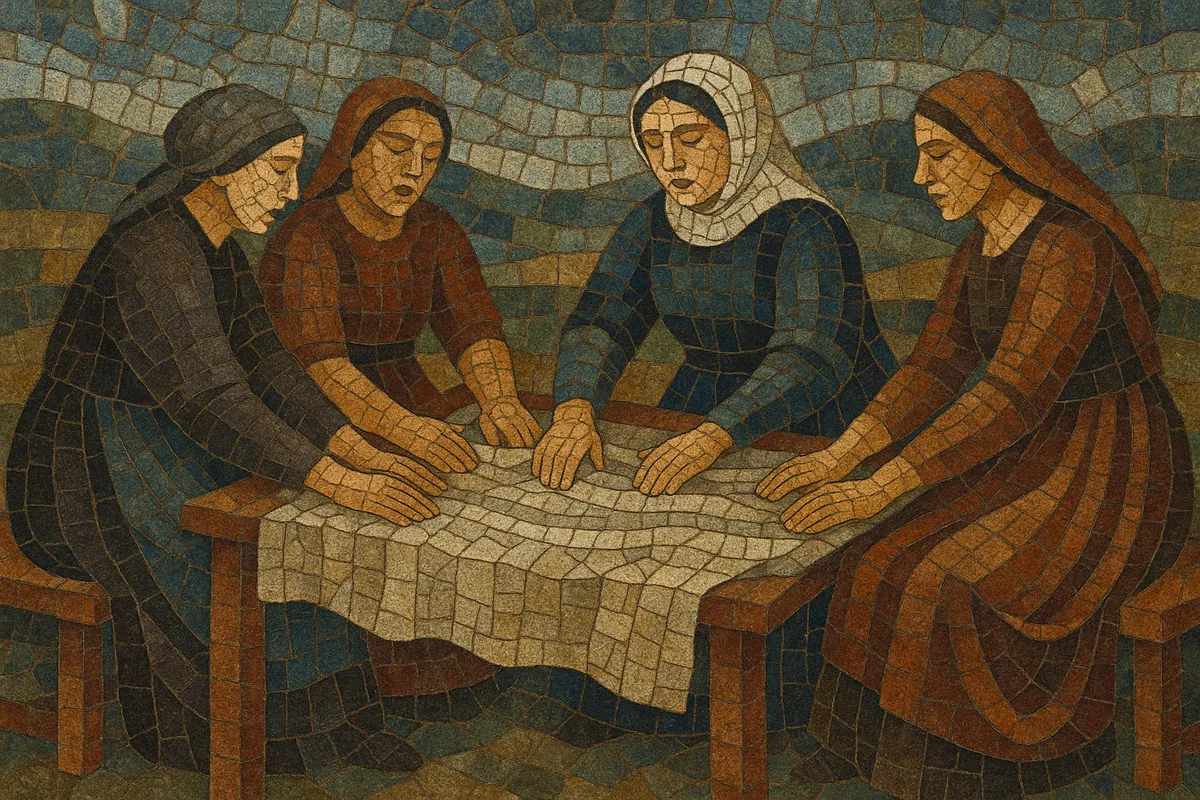Waulking song (Òrain Luaidh) is a Scottish Gaelic women’s work-song tradition performed during the waulking (fulling) of tweed cloth in the Highlands and Hebrides.
Sung a cappella in call-and-response, a leader delivers improvised or semi-fixed verses while the group answers with a short, repetitive chorus full of vocables (e.g., “hi rì u o”). The singers beat the wet cloth rhythmically on a table, creating a strong, steady pulse that both coordinates labor and shapes the music.
Melodies are typically modal (often pentatonic, Dorian, or Mixolydian), kept within a narrow range, and embellished with subtle Gaelic ornaments. Texts can be playful, satirical, romantic, or commemorative, with choruses remaining constant while verses can be extended or improvised to match the duration of the work.
Waulking songs emerged in Gaelic-speaking Scotland, especially the Hebrides, as communal songs used to accompany the fulling (waulking) of newly woven tweed. The repetitive, physically demanding process required a coordinated beat; singing provided meter, stamina, and social cohesion, while the lyrics carried local stories, humor, and memory.
A song leader would intone a verse, answered by the group’s short chorus. Vocables (nonsense syllables) ensured consistent rhythm and easy participation. The music is unaccompanied, with the percussive slapping of the cloth forming the drum. Tempos commonly begin moderate and gradually quicken as work progresses.
With industrialization in the late 19th and 20th centuries, household waulking waned. Folklorists and field recordists—among them the School of Scottish Studies, Hamish Henderson, Calum Maclean, and Alan Lomax—captured performances mid-20th century, preserving repertoire and style even as the work context faded.
From the folk revival onward, Gaelic singers and groups reintroduced waulking songs to concert stages and recordings. Artists such as Capercaillie and contemporary Gaelic vocalists have presented Òrain Luaidh in performance settings, sometimes with light percussion, keeping the call-and-response core intact. These songs have since become emblematic within Scottish folk and broader Celtic music circles.
Waulking songs embody women’s communal labor, oral history, and Gaelic language vitality. They serve as a living archive of local names, events, and emotions, and continue to inform Scottish folk performance and education.


